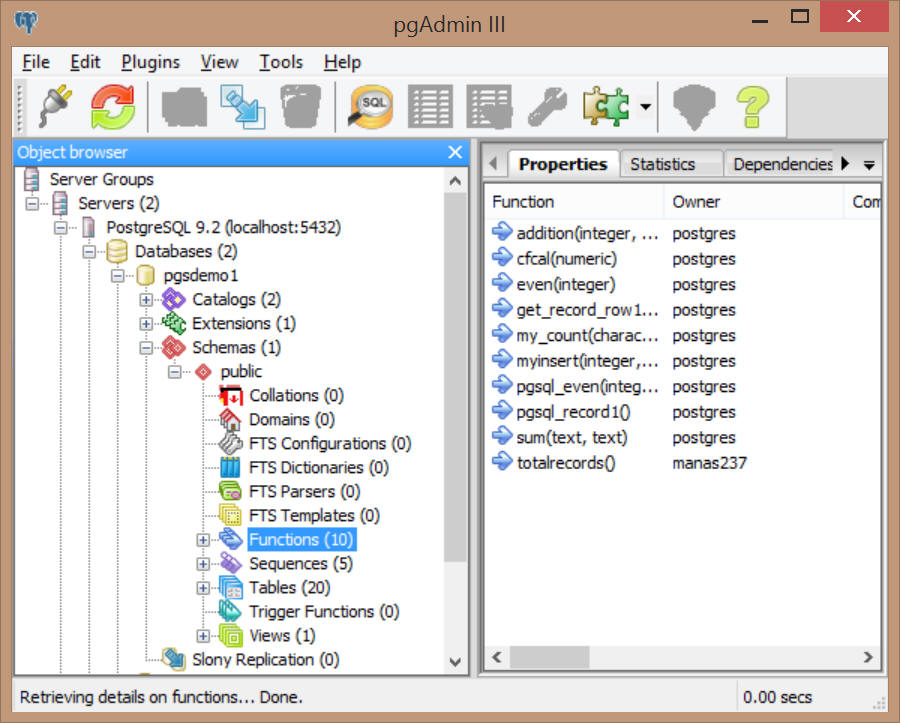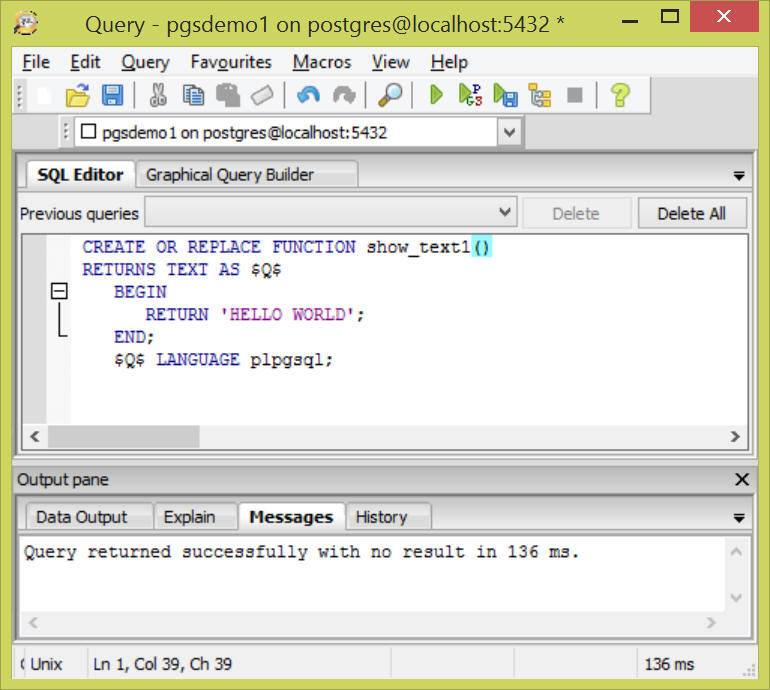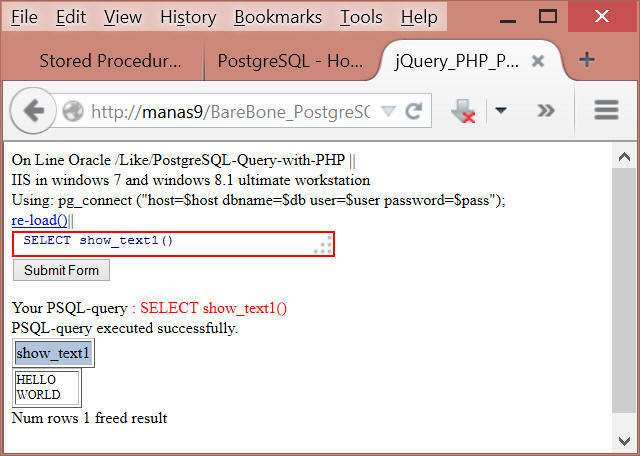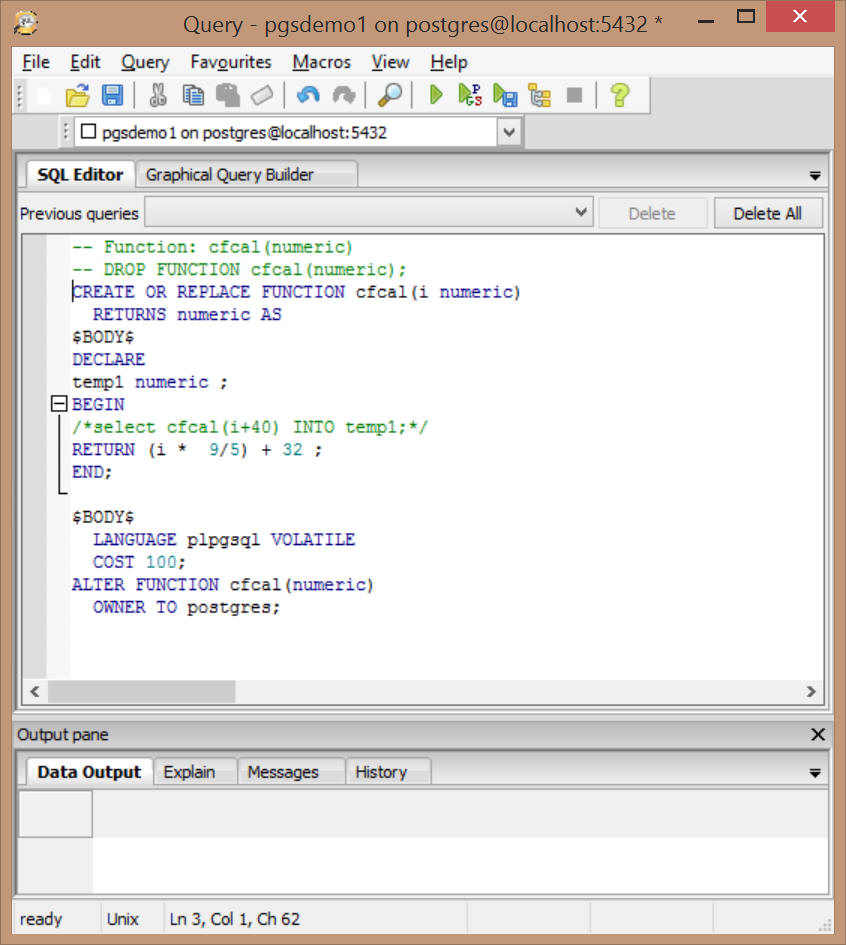Stored Functions : FYI
|
|
There is no procedure and all functions in PostgreSQL,
Enterprise DB does support CREATE PROCEDURE to be compatible
with Oracle.
Now let us create a function
Now let us call this function using PHP query tool.
To distinguish, a procedure from a function, that the stored procedures can usually multiple results sets where as functions can not is to return multiple result sets. In PostgreSQL such tasks are accomplished by creating a function that returns a set of refcursors.
In PostgreSQL RDBMS, the cursor remains open until the end of transaction, and since PostgreSQL works in auto-commit mode by default, the cursor is closed immediately after the procedure call, so it is not available to the caller. To work with cursors you have to start a transaction (turn auto-commit off). In PostgreSQL, you can write a function marked as VOLATILE ,meaning that the function value can change even within a single table scan that updates data, and you intend to get different output on successive calls. CREATE OR REPLACE FUNCTION cfcal(i numeric) |
CREATE OR REPLACE FUNCTION pgsql_record1
(OUT i int, OUT t text)
RETURNS SETOF RECORD AS $$
values (1,'integer'),(2,'text')
$$ LANGUAGE SQL;
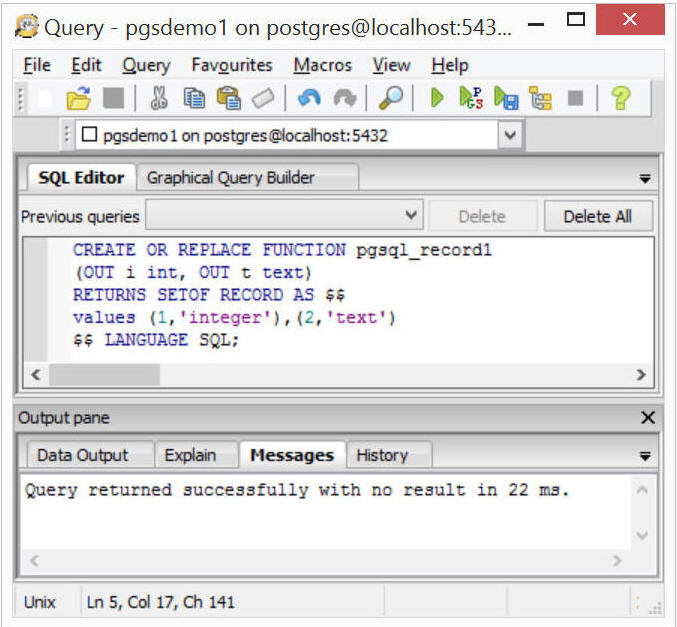
CREATE or replace FUNCTION func_refcursor2(refcursor, refcursor,
refcursor) RETURNS SETOF refcursor AS $$
BEGIN
OPEN $1 FOR SELECT * FROM table_pgsql1;
RETURN NEXT $1;
OPEN $2 FOR SELECT * FROM table_pgsql2;
RETURN NEXT $2;
OPEN $3 FOR SELECT ename FROM emp;
RETURN NEXT $3;
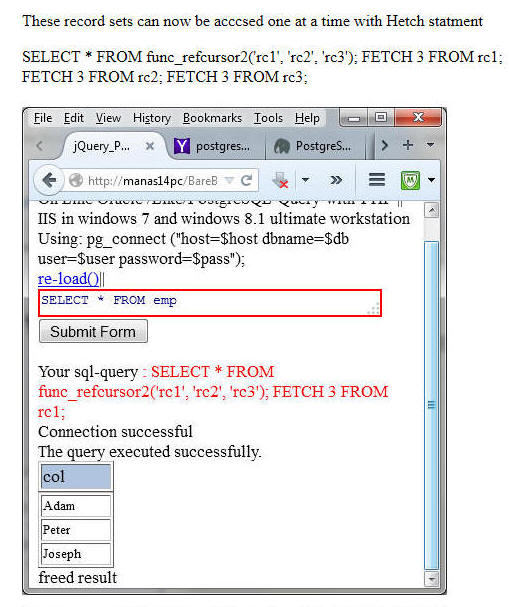
Why NOT use Stored Procedures*
* Views may be all you need.
* An object-relational mapper (ORM) can help write queries safely.
* Difficult to version control stored procedures.
* Software rollouts may require more db changes.
* Could slow software development process
